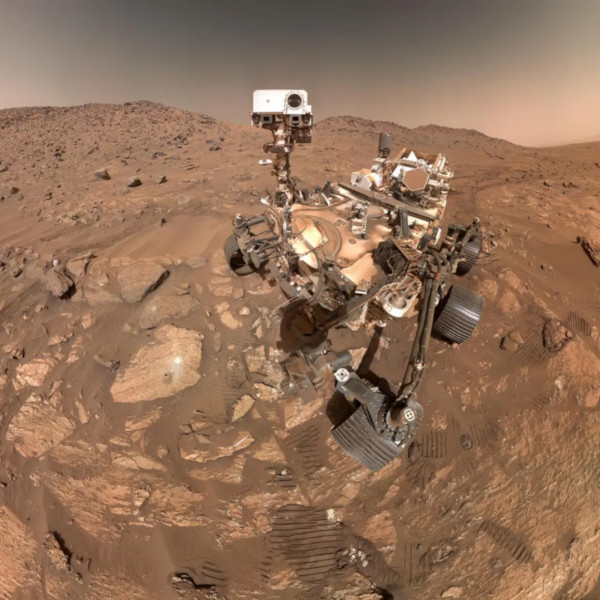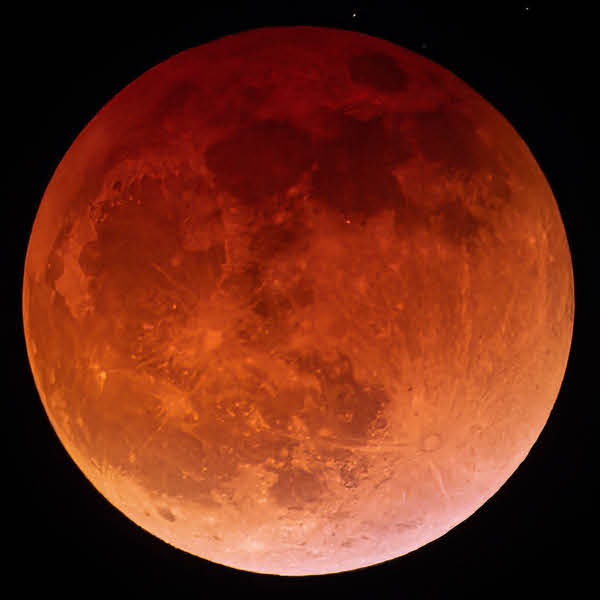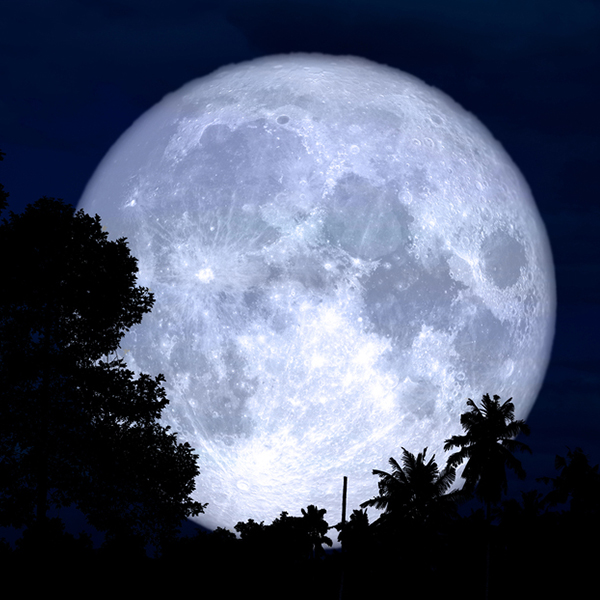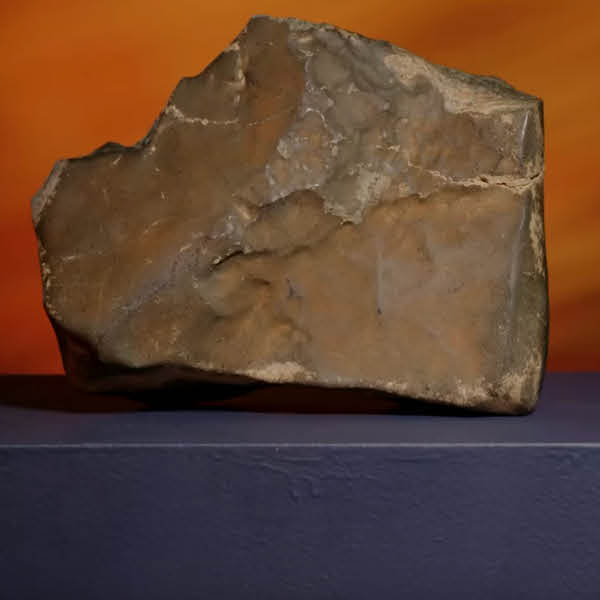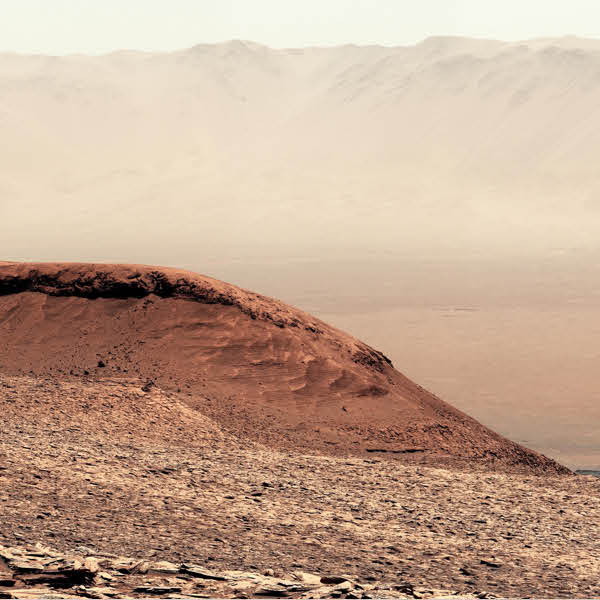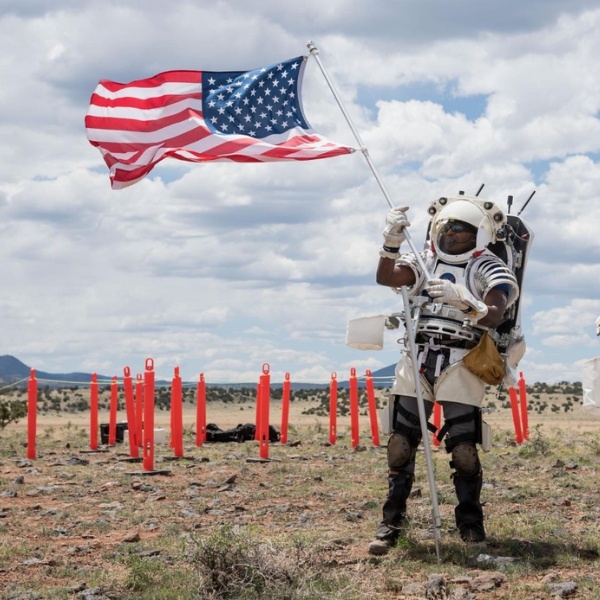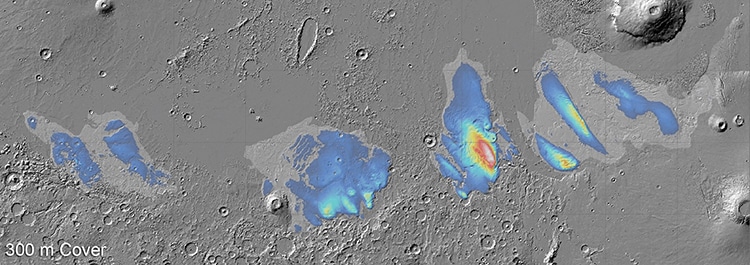
Mars’s Medusae Fossae Formation (MFF) where a dry layer of dust hides deposits of water ice. The red indicates the thickest ice. (Photo: Planetary Science Institute/Smithsonian Institution)
At present, Mars is known as arid, dry, and dusty. The Red Planet is seemingly the antithesis of the water-rich blue-green surface of Earth. However, water once river the surface of Mars, carving channels for rivers and leaving behind the remnants of lake beds. Beyond the dusty surface, water remains on the planet, trapped in giant blocks of ice deposited beneath the surface. While these deposits of water ice have previously been documented near Mars’ polar ice caps, a new announcement from the European Space Agency (ESA) suggests massive deposits lurk beneath a mysterious dust mound known as Medusae Fossae Formation (MFF).
The new dating suggesting the existence of these ice deposits comes from the ESA’s Mars Express space craft. In 2007, the Mars Express used its MARSIS radar technology to scan the area, revealing something lurked beneath the mounds of shifting dust. In fact, the very reality of the dust not settling deeper and compacting suggested something lay underneath. Now, the MARSIS radar has provided updated data suggesting just what material is deposited. These deposits are up to 3.7 kilometers (2.3 miles) thick. Thomas Watters of the Smithsonian Institution, who led the current Marsresearch, says, “Excitingly, the radar signals match what we’d expect to see from layered ice, and are similar to the signals we see from Mars’ polar caps, which we know to be very ice rich.”
The deposits of ice are massive. If melted, the water would cover Mars’ surface in a shallow ocean 1.5 to 2.7 meters (4.9 to 8.9 feet) deep. The volume is comparative to the water in the Red Sea. “This latest analysis challenges our understanding of the Medusae Fossae Formation, and raises as many questions as answers,” Colin Wilson, an ESA project scientist, said in a statement. “How long ago did these ice deposits form, and what was Mars like at that time? If confirmed to be water ice, these massive deposits would change our understanding of Mars climate history. Any reservoir of ancient water would be a fascinating target for human or robotic exploration.”
The deposits may have formed while the poles of the planet were different aligned in a past age, as ice is present under the current poles. While current technology means a Mars mission would have difficulty getting to and tapping the deposits under all that dust, water would be critical to any future on Mars.
For some time now, scientists have agreed there is water on Mars. Locating it in these massive ice deposits tells us a lot more about the planet's environment.
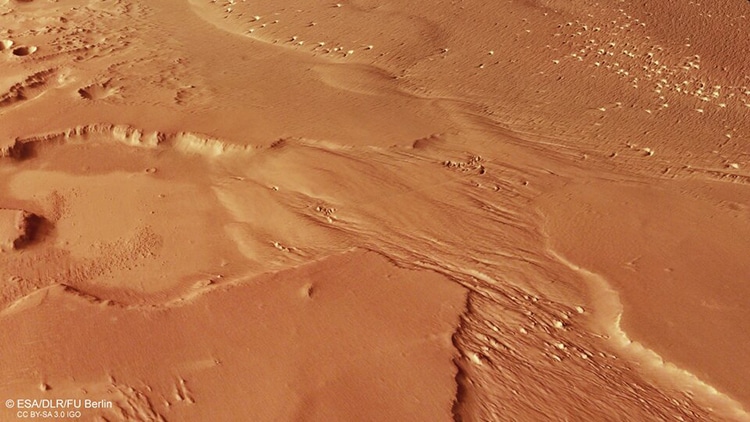
The Medusae Fossae. (Photo:
ESA/DLR/FU Berlin, CC BY-SA 3.0 IGO)
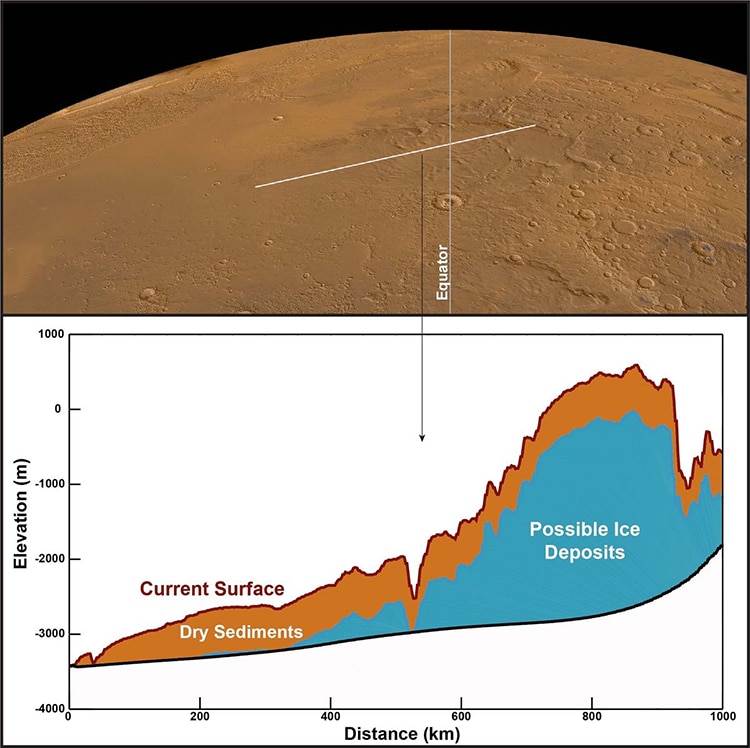
The line shows a stretch of surface where radar revealed the water ice below. (Photo: CReSIS/KU/Smithsonian Institution)
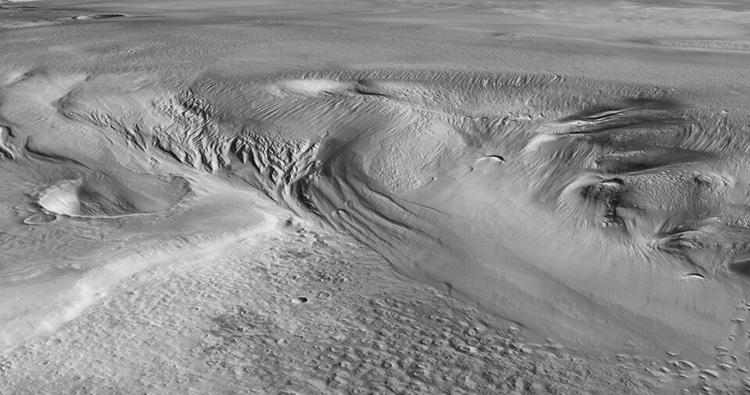
The Eumenides Dorsum within the MFF. (Photo:
Caltech/JPL Global CTX Mosaic of Mars/Smithsonian Institution)
h/t: [Space]
Related Articles:
Watch These “Outtakes” of NASA Astronauts Struggling To Walk on the Moon
Four Volunteers Entered NASA’s Mars Simulation Where They Will Live for Over a Year
Digital Atlas of Over 380,000 Galaxies Is Made Available Online














































































